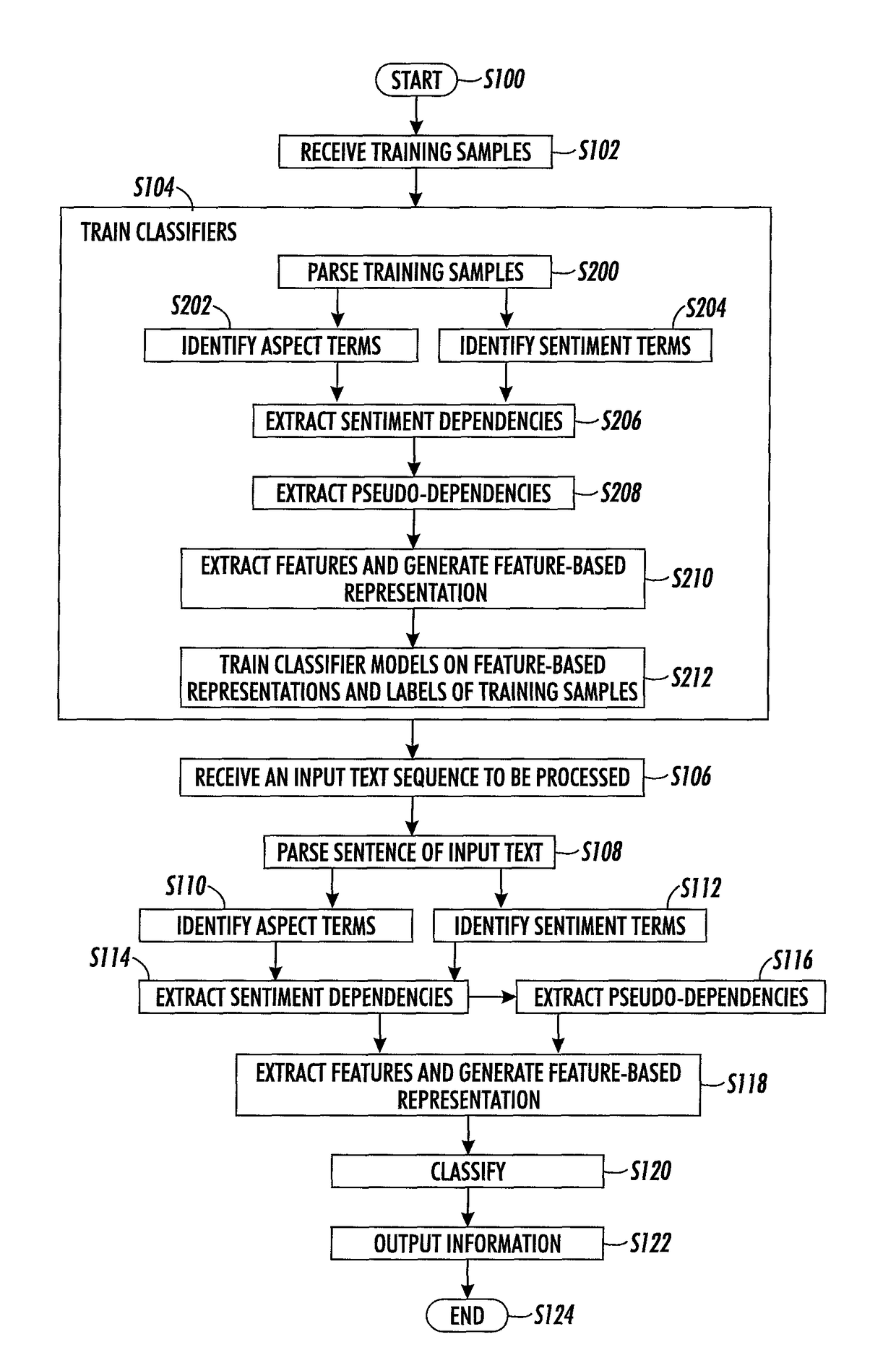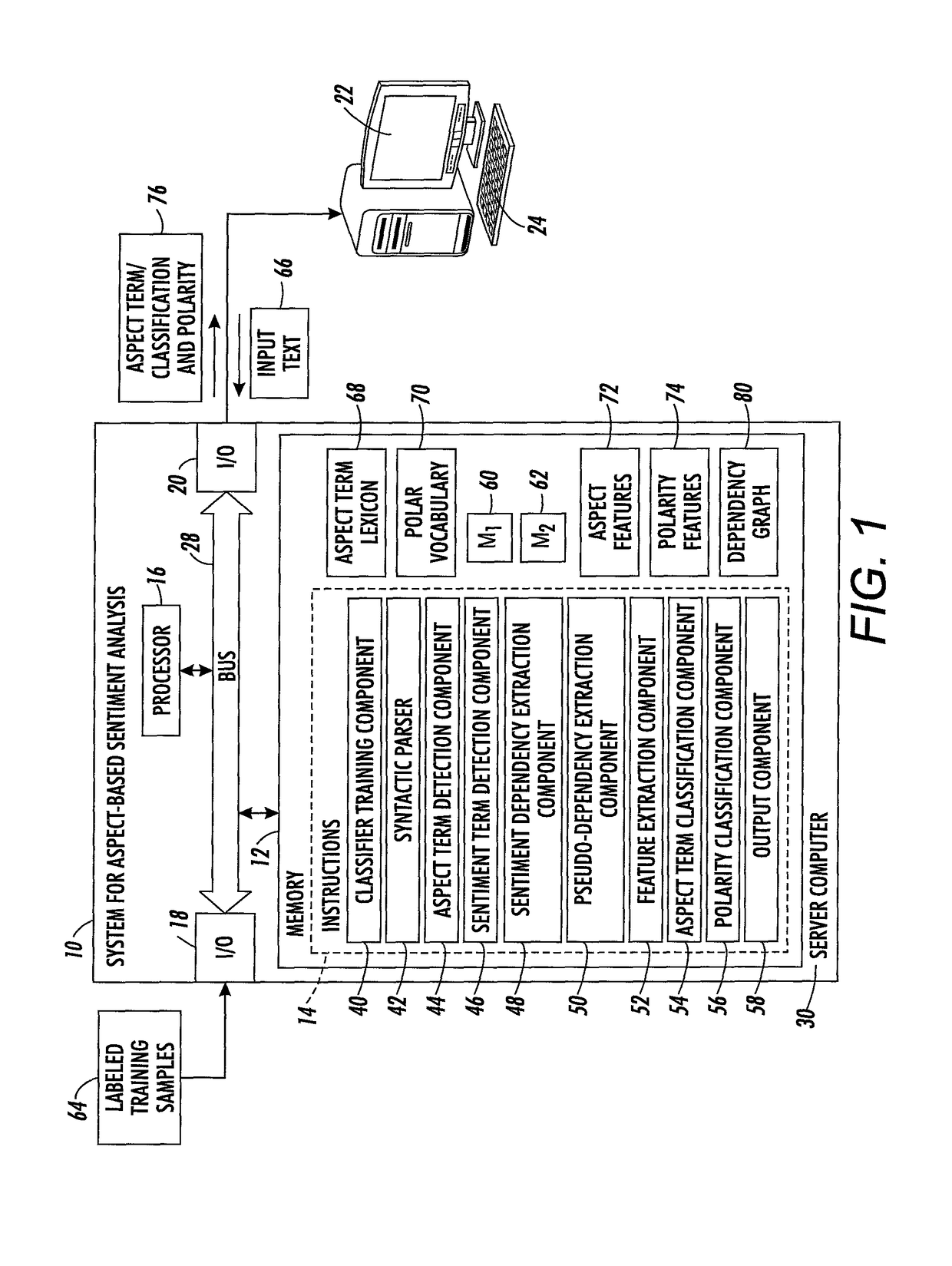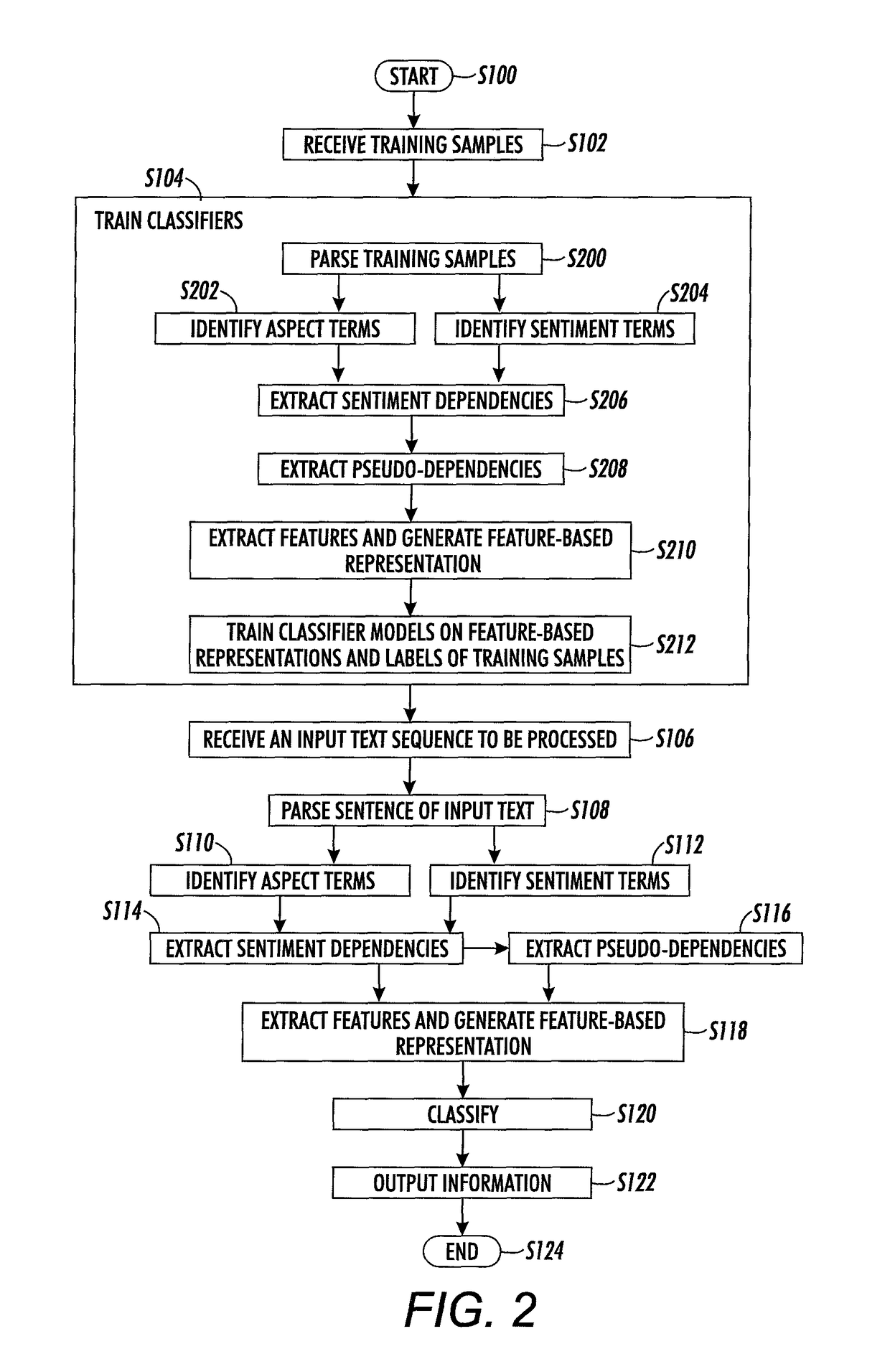Loose term-centric representation for term classification in aspect-based sentiment analysis
a term classification and loose term technology, applied in the field of sentiment analysis, can solve the problems of not providing meaningful data concerning, difficult training of a system for such a fine-grained task, and inability to achieve high accuracy
- Summary
- Abstract
- Description
- Claims
- Application Information
AI Technical Summary
Benefits of technology
Problems solved by technology
Method used
Image
Examples
examples
[0173]A prior method for term correction is described in above-mentioned U.S. application Ser. No. 14 / 569,899, which was designed in the context, of the SemEval2014 challenge (Maria Pontiki, et al., “Semeval-2014 Task 4: Aspect based sentiment analysis,” Proc. 8th Int'l Workshop on Semantic Evaluation (SemEval 2014), pp. 27-35, 2014.
[0174]The present method focuses on adaptations made for term classification, in the case of explicit terms. A term centric representation is used, taking into account information extracted from sentiment dependencies as well as long distance information in the sentence. This approach appears to be quite effective for the task of aspect categories and polarity classification, as shown in the following Examples.
Datasets
[0175]Training examples were taken from the Semeval 2016 dataset. In this dataset, only terms about which an opinion is expressed are annotated. When an aspect category is expressed implicitly, without the explicit presence of an aspect ter...
PUM
 Login to View More
Login to View More Abstract
Description
Claims
Application Information
 Login to View More
Login to View More - R&D Engineer
- R&D Manager
- IP Professional
- Industry Leading Data Capabilities
- Powerful AI technology
- Patent DNA Extraction
Browse by: Latest US Patents, China's latest patents, Technical Efficacy Thesaurus, Application Domain, Technology Topic, Popular Technical Reports.
© 2024 PatSnap. All rights reserved.Legal|Privacy policy|Modern Slavery Act Transparency Statement|Sitemap|About US| Contact US: help@patsnap.com










